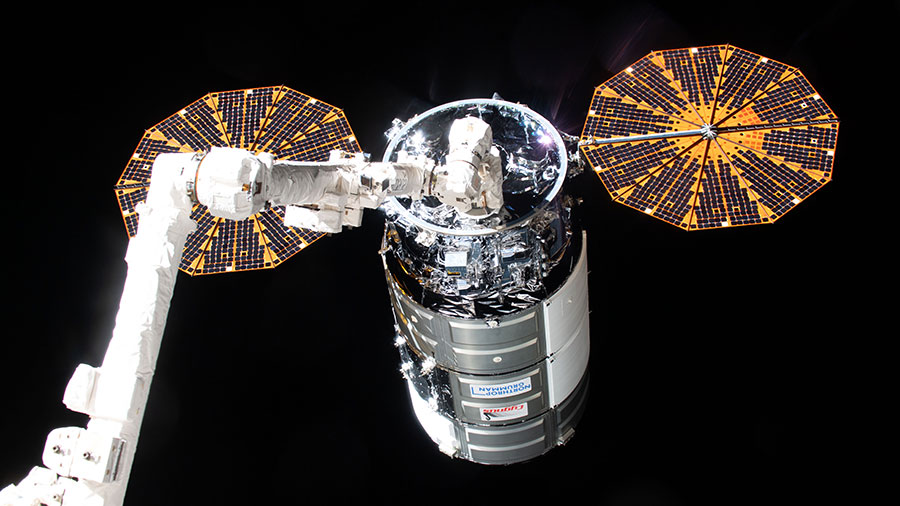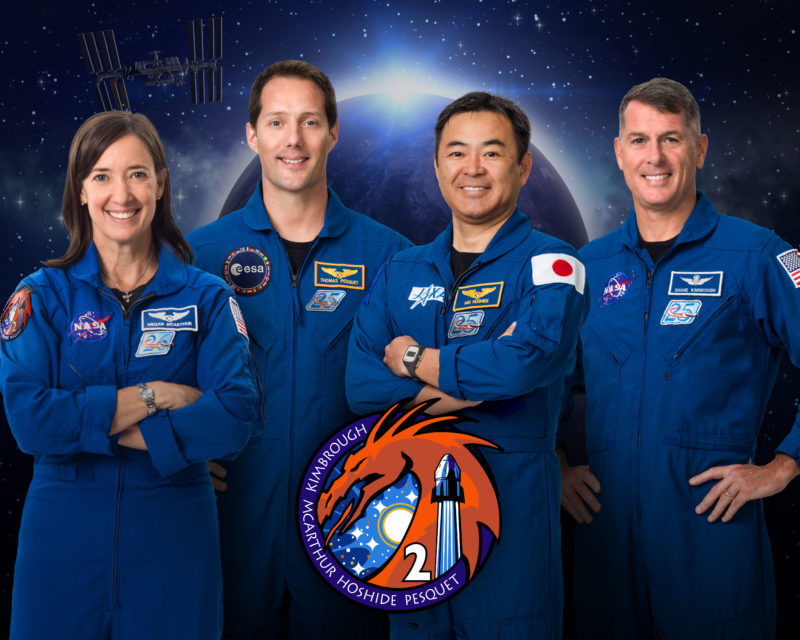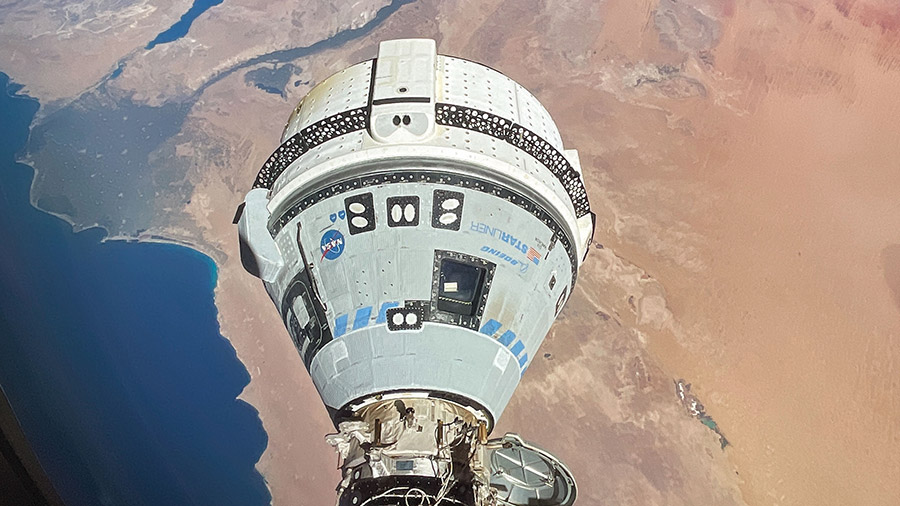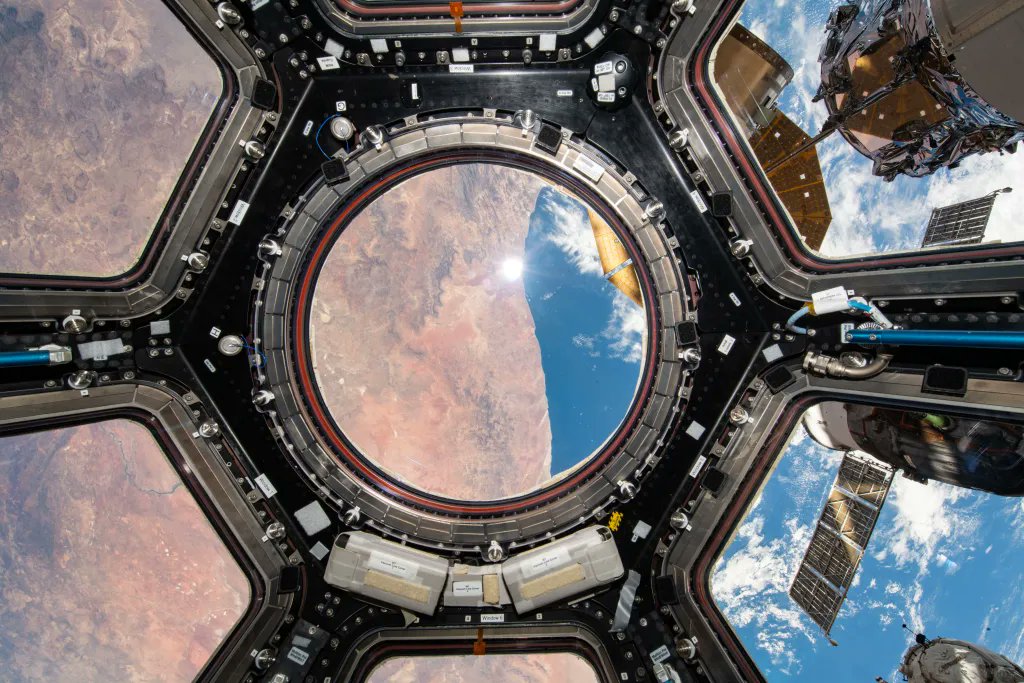
Preparations are underway aboard the International Space Station to capture and install a U.S. cargo craft due to arrive next week. Spacesuit checks and health studies were also on the program at the end of the week for the two crews living and working aboard the orbital outpost.
Mission managers have given the go for the launch of Northrop Grumman’s Cygnus cargo craft set for 11:29 a.m. EDT on Saturday from Space Launch Complex 40 at Cape Canaveral Space Force Station in Florida. Cygnus will orbit Earth for a day-and-a-half before arriving at the orbital outpost early Monday.
Expedition 71 Engineers Matthew Dominick and Jeanette Epps will be on duty Monday monitoring Cygnus’ approach and rendezvous. Dominick will command the Canadarm2 robotic arm to reach out and grapple Cygnus at approximately 3:55 a.m. on Monday. Dominick will be inside the cupola with Epps backing him up Monday morning and keeping an eye on Cygnus as it advances toward the orbital outpost.
The duo spent Friday morning continuing to train on a computer and simulated the robotics activities necessary to capture Cygnus next week. At the end of the day, the NASA pair joined fellow astronauts Tracy C. Dyson, Mike Barratt, Butch Wilmore, and Suni Williams for a Cygnus cargo operations conference with mission controllers on the ground.
Earlier, Dyson, Wilmore, and Williams took turns throughout the day servicing a U.S. spacesuit in the Quest airlock. Dyson started the job first cleaning the spacesuit’s cooling loops. Afterward, Wilmore and Williams took over finishing up the loop cleaning job then finally deconfiguring and stowing the suit components inside Quest.
Dyson later examined the eyes of NASA Flight Engineer Mike Barratt using standard medical imaging hardware found in an optometrist’s office on Earth. Doctors on Earth guided Dyson as she peered in Barratt’s cornea, retina, and lens to understand microgravity’s effect on crew vision. Before the eye checks began, Barratt spent his day servicing a variety of research hardware including the Life Science Glovebox in the Kibo laboratory module and the CIMON mobile crew helper powered by artificial intelligence.
Wilmore and Williams, Boeing’s Crew Flight Test Commander and Pilot respectively, focused primarily on lab maintenance before they began their spacesuit work Friday afternoon. Wilmore spent some time inside the Tranquility module cleaning up cables and stowing electronics components. Williams worked during her morning inside the Columbus laboratory module installing networking gear including a video and data processing unit and a high-rate modem.
Working in the station’s Roscosmos segment, Commander Oleg Kononenko set up Earth observation hardware to study luminous clouds in Earth’s upper atmosphere. Flight Engineer Nikolai Chub started day servicing on oxygen generator, then studied the effects of magnetic and electrical fields on fluid physics, before uninstalling navigation hardware from the Progress 88 resupply ship. Flight Engineer Alexander Grebenkin spent his day working on orbital plumbing and cleaning ventilation systems while also fitting in an Earth photography session in the middle of the day.
Learn more about station activities by following the space station blog, @space_station and @ISS_Research on X, as well as the ISS Facebook and ISS Instagram accounts.
Get weekly video highlights at: https://roundupreads.jsc.nasa.gov/videoupdate/
Get the latest from NASA delivered every week. Subscribe here: www.nasa.gov/subscribe




